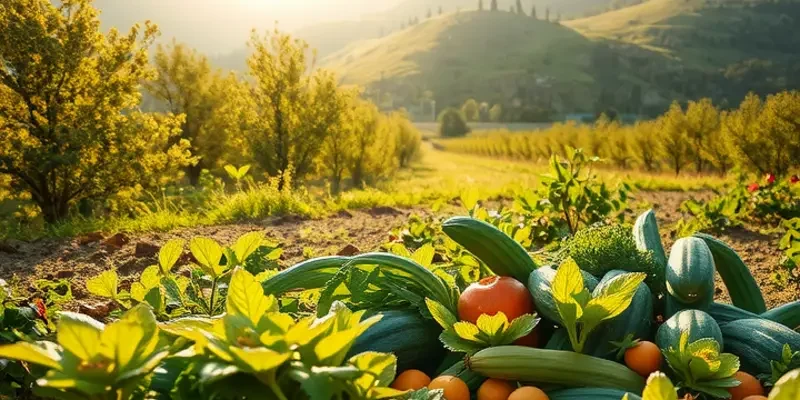Cooking sauces can seem daunting, but with the right approach and mindset, it can be a rewarding experience. Easy sauce simmering involves a few key techniques that can significantly enhance your homemade dishes. Whether you’re a novice or an experienced cook, mastering the art of simmering will open up new culinary possibilities. Let’s dive into some easy techniques that will have you creating flavorful sauces in no time!
The Basics of Sauce Simmering

Simmering sauces to perfection is an art. The process involves gently cooking ingredients to meld their flavors. Heat plays a crucial role in this transformation, and understanding its impact is vital.
When simmering, the temperature usually hovers between 180 to 205°F. This range avoids rapid boiling, allowing sauce flavors to deepen and mature gradually. Patience is key in maintaining this gentle heat.
Essential Ingredients
To start, your pantry should include some fundamental ingredients. Aromatics like onions, garlic, and shallots form the backbone of most sauces. For rich umami flavors, consider mushrooms, tomatoes, or soy-based elements. Always keep a variety of broths and stocks on hand—these are the canvas upon which sauces are painted.
Aromatic herbs such as bay leaves and thyme can drastically change a sauce’s flavor profile. Fresh herbs added at the end of cooking offer brightness, whereas dried herbs should go in early to let their full flavors release.
Tools of the Trade
Efficient sauce simmering requires a few simple tools. A sturdy, heavy-bottomed saucepan helps distribute heat evenly, minimizing the risk of sticking or burning. A reliable whisk and wooden spoon are invaluable for ensuring smoothness and preventing lumps.
Use a fine sieve or strainer for refined results, especially when a silky texture is desired. Consider incorporating a kitchen thermometer to maintain accurate temperatures, especially when precision is crucial.
Methodology
Begin by heating oil or butter in your pan until shimmering, then add aromatics like onions and garlic, allowing them to soften gently. This stage is about building a flavor base. Next, introduce liquids—stock, tomato sauce, or wine—and increase the heat until you achieve a simmer.
Monitor closely as the sauce simmers by adjusting the heat, ensuring it never reaches a full boil. Stir occasionally to prevent sticking and promote even cooking. Simmering can last from 10 minutes to several hours, depending on the desired concentration and flavor complexity.
To thicken a sauce, you may need to reduce the liquid by simmering longer or by incorporating a flour-and-fat roux. Alternatively, use corn starch or arrowroot for a quick thickening solution.
Remember that flavors will intensify over time, so season your sauce carefully initially, adjusting near the end of the simmering process.
Sauce simmering is both a science and an art. It involves keen attention to detail but rewards with layers of complex flavors. For more tips on handling kitchen ingredients effectively, visit Speedy Garlic Peeling Techniques. Together, these techniques will elevate your kitchen prowess to new heights.
Creating Flavorful Sauces

Mastering the art of flavorful sauces involves understanding how to layer ingredients to elevate the dish. The key lies in balancing acidity, sweetness, and spice, which can turn an ordinary meal into a culinary masterpiece. In this chapter, we explore simple combinations that will make your sauces stand out.
Start by selecting your base ingredient. Whether it’s tomatoes for a classic marinara, cream for a rich Alfredo, or soy sauce for an Asian-inspired mix, these bases set the stage for flavor. Each brings unique characteristics: tomatoes add tanginess, cream provides richness, and soy sauce offers umami.
To enhance these bases, incorporate aromatic ingredients like garlic, onions, and herbs. Garlic adds a robust and earthy tone, while onions lend sweetness and depth. Herbs such as basil, thyme, or rosemary infuse freshness and complexity. Sauté these ingredients lightly in olive oil or butter, which will allow their flavors to bloom, adding a layer of depth to your sauce.
Acidity is essential in balancing the richness. A splash of vinegar or a squeeze of lemon can brighten flavors and prevent them from becoming too heavy. When using tomatoes, remember that they naturally carry acidity, so adjust the level based on your preference. Tasting as you cook is crucial to achieve your desired balance.
Sweetness is another component that can offset acidity and spice. A pinch of sugar or a drizzle of honey can soften sharp notes and bring harmony. Be cautious not to overpower the sauce; subtlety is key. Consider adding sweetness through natural sources like caramelized onions or roasted red peppers.
Spice introduces a level of intrigue to your sauces. Whether it’s a dash of cayenne for heat or a hint of smoked paprika for depth, spices should enhance rather than dominate. Begin with small amounts and adjust according to taste. Remember, it’s easier to add more spice than to take it away.
For those seeking to add more depth without salt, consider using ingredients like mushrooms or nutritional yeast. These can amplify flavors without overwhelming sodium levels. For more ideas on flavor boosting without salt, you might want to explore this guide for creative combinations.
Finally, allow your sauce to simmer. Simmering melds flavors together, intensifying their profiles and breaking down ingredients for a smoother texture. Patience is key here; the longer the sauce simmers at a low heat, the more integrated and rich the flavors become.
Whether topping a bowl of fresh pasta, smothering a succulent steak, or being used as a vibrant dip, a well-crafted sauce can make a meal memorable. Embrace experimentation with ingredients, trust your palate, and you’ll soon master the art of creating flavorful sauces.
Final words
Simmering sauces can be a delightful and straightforward task that transforms your home cooking. As you practice these techniques, you’ll find the process becomes second nature. With just a few ingredients and some patience, you can create rich, flavorful sauces that impress family and friends. Remember, cooking is all about experimentation and finding what works for you. Don’t hesitate to adjust ingredients to suit your taste and discover new flavor profiles. Happy simmering!







